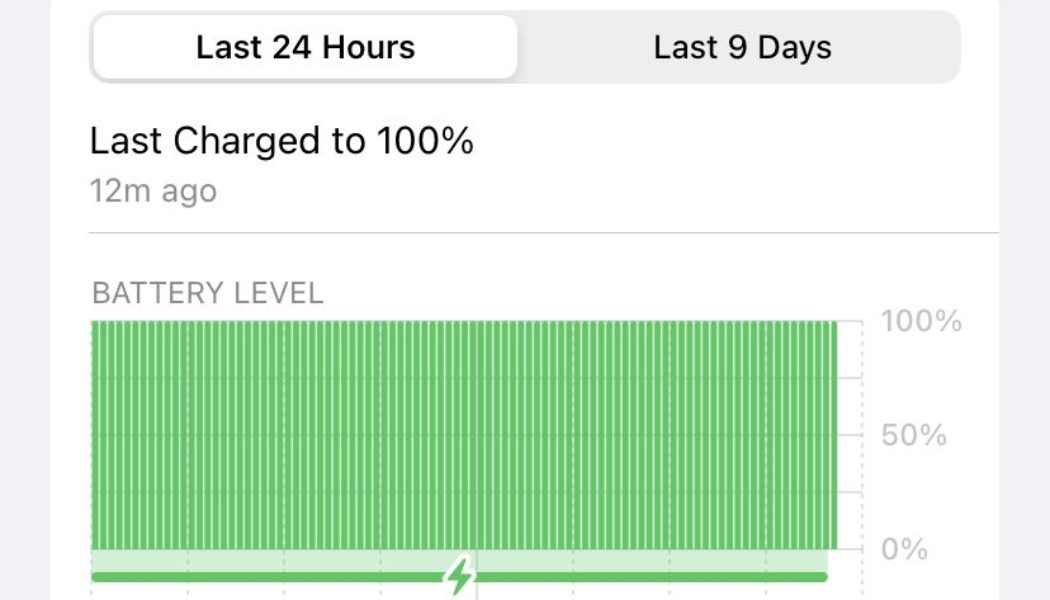Your iPhone’s aging lithium-ion batteries will eventually start to lose their ability to retain a charge — and that can be highly frustrating, especially if you’re out and about all day. If that is happening to you, there are several solutions: you can switch over to the latest iPhone, start carrying a battery charger around with you, or — simply replace the battery.
To first identify whether your battery is ready for a change, you can check to see what the current health of your battery is by going to “Settings” > “Battery” > “Battery Health.” This is where you can find out your battery’s current maximum capacity. A small notice at the very top may appear if your iPhone’s battery is ready for a swap.
:no_upscale()/cdn.vox-cdn.com/uploads/chorus_asset/file/22858291/IMG_FF5BFD69D52F_1.jpeg)
:no_upscale()/cdn.vox-cdn.com/uploads/chorus_asset/file/22858292/IMG_CB3733A4E40D_1.jpeg)
If you’ve decided to replace the battery, you have two choices: doing it yourself or hiring someone else — like Apple — to do it. Doing it yourself poses several risks — you void any remaining warranty, and you risk breaking your phone. But if you’d rather do it yourself, there are plenty of guides online, and the process is easier than you might imagine.
DIY
For those ready to take on this task, a good place to start is iFixit, which offers very in-depth explainers of how to proceed (for example, here is one to use if you own an iPhone 11). There are also a variety of YouTube videos available that offer step-by-step instructions. The process involves unscrewing the back of the phone, mildly heating the lower edge of the phone, using suction cups to remove the display, and follow several steps to remove and replace the battery.
[embedded content]
Before you start, you’ll need smartphone repair tools, which can cost around $13 (iFixit strongly recommends you add a suction tool called the iSclack). Some vendors on Amazon even sell iPhone battery replacement kits for this very purpose, which can run around $25 or so.
Be aware that If you do choose to do it yourself and you have a water resistant phone, your phone will no longer be water resistant after you’ve opened it up. In addition, there’s a good chance that your OS will recognize that there is no longer an Apple-manufactured battery in your phone, which means you may get an occasional warning notice and the Battery Health app won’t work.
Get Apple to do it
If you’d rather get someone else to replace the battery and not risk tampering with your device, Apple offers replacements under several conditions, according to its website. If your iPhone is under warranty or you have AppleCare+ and Apple deems the battery defective, repairs are free. But if the problem is due to some other factor that isn’t covered by AppleCare+ — or if you’re not covered by that or by a warranty — you’ll have to pay a service fee of $49 for an iPhone SE (2nd gen) up to an iPhone 8 Plus, or a $69 fee for more recent models.
You can either ship in your phone for repairs or head to an Apple store. A physical store repair could be completed in one visit or, in more complex cases, take up to three to five days, according to Apple. Shipping it in will take a bit longer, as you need to wait for Apple to send you a box to collect your iPhone. In addition, if your phone is out of warranty, there will be a $6.95 shipping fee.
If Apple replaces your battery for you, the iPhone should continue to be water resistant.
If all this doesn’t work for you, your timeline, or your budget, there may also be third-party vendors who offer repair services for iPhones in your local neighborhood. But their quality — and whether they use sealing adhesive to maintain water resistance — varies by vendor, so always check reviews and ask questions.
Update September 17th, 2021, 3:45PM ET: This article was originally published on December 21st, 2017, and has been updated to account for service, device, and OS changes.









